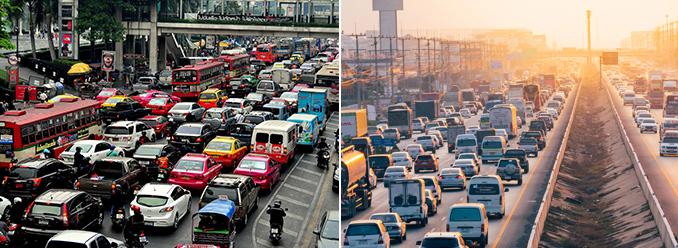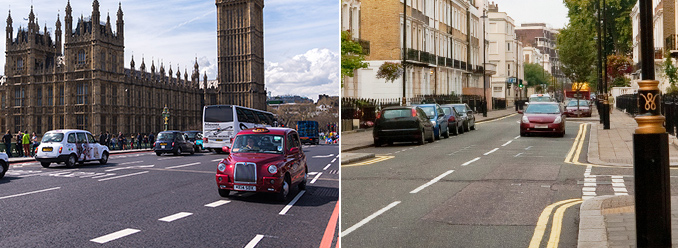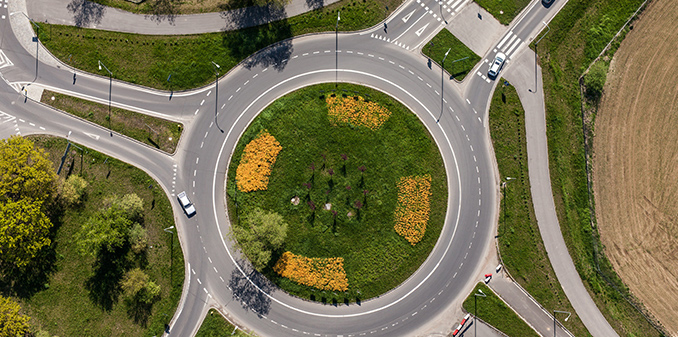
Have you ever felt a sense of freedom through the thrill of traveling? There’s one thing that can elevate that feeling even more: a road trip! But there are so many things to remember when driving in a place you’re not familiar with. Here are some tips you must be aware of when driving during overseas trips.


You can hardly find any cars parked illegally in Japan. Parking is what you must pay most attention to when traveling in Japan. Japan has a ‘garage certificate’ system that prohibits people from buying a car without a parking space. Even those living in apartment buildings pay for their parking space in units, and people naturally think that parking is always charged.
There’s also a strict punishment standard for illegal parking. A fine of a maximum of 27,000 yen is imposed on illegally parked cars. But don’t be so alarmed. Just check for the ‘No Parking’ sign while traveling before you park the car, and always be mindful that you must pay for parking spaces in the city.

Big cities in Thailand suffer from severe traffic jams during rush hour. It feels even worse because most roads are narrow. It’s best to avoid driving during rush hour, and it’s much more efficient to take public transportation like the BTS and MTR.
You may drive on a highway connecting small cities if you’re traveling to many parts of Thailand. Unlike general highways in which you can’t easily change the direction once you’re on one, some local highways in Thailand have certain zones where you’re allowed to make a U-turn. If you come across a car making a U-turn in the middle of a highway, don’t be surprised. Slow down and be prepared just in case.

The UK, which is notorious for its high prices, also imposes big fines for violating traffic rules. A fine of 500 pounds is imposed for not wearing a seat belt, and all passengers in the car can be subject to fines, so even the ones sitting in the backseat must always put on their seat belts.
One more thing to note on UK roads is the centerlines drawn in white broken lines. You might accidentally cross the white broken lines to change lanes because you’re so used to the orange centerlines. This may lead to a severe accident like a head-on collision, so always be extra careful.

The most unique thing in Australia is that most intersections are roundabouts. If you’ve arrived at the stop line around the same time, the car entering from the right always has priority. If you’ve entered the roundabout, stop first and watch the traffic conditions around you.
Also, the fines in Australia are strict and rigid. A fine is imposed even if you go even 1km faster. A fine of 75 Australian dollars is imposed for speeding, and 150~200 Australian dollars for traffic signal violations. So be careful not to use all your traveling money on paying fines.

The traffic rules related to school buses are extremely strict in the US. If the yellow light on the school bus in front of you begins to flicker, you must slow down and stop. If the school bus holds out the ‘STOP’ sign with the red lights flashing, the cars behind the bus as well as the cars coming in the opposite direction must stop. A fine of a maximum of 1,000 dollars will be imposed if you violate this.
This strict punishment originates from one of the values of the US that consider children’s safety as the top priority. Since the enactment of this law, the number of injuries and deaths caused by cars when children get on or off the school bus decreased significantly.

Have you ever waited forever to turn left because there was no ‘Turn Left’ signal even when there was no car coming from the opposite side? In Canada, you can always turn left at your own risk if there’s a road or an alley on the left. The traffic light has no ‘Turn Left’ sign. If you want to turn left, do so while watching the cars coming from the opposite side after the ‘Go Straight’ signal turns on. This also means that the car in front of you can easily turn left at any time, so stay alert while driving.
The traffic environments and rules are as diverse as the cultures in different countries. Whichever continent you go to – Asia, Europe, the Americas – it is best to learn the important traffic rules of the relevant country in advance. Don’t let driving in a new place keep you from enjoying a more exciting and free journey!